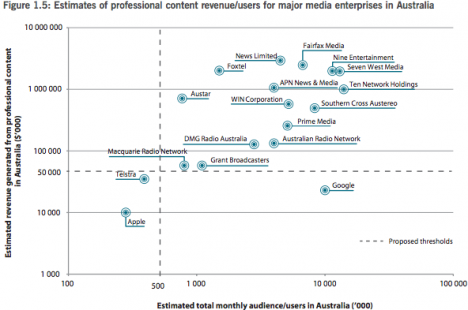Convergence Review: New rules for the ‘content service enterprises’ big boys
The Convergence Review into Australian media has proposed a new regulatory regime for Australia’s largest media players, with organisations that bring in more than $50m revenue a year on the back of professionally produced local content and reach more than 500,000 Australians a month falling within its remit. These organisations would be known as “content service enterprises”.
The figure is dramatically higher than the 15,000 “hits” per month proposed by the Independent Media Inquiry which in March had proposed the setting up of a News Media Council.
The review said that at this stage Google – and sister site YouTube – would not fall within the CSE threshold because it does not carry sufficient Australian created professional content.


